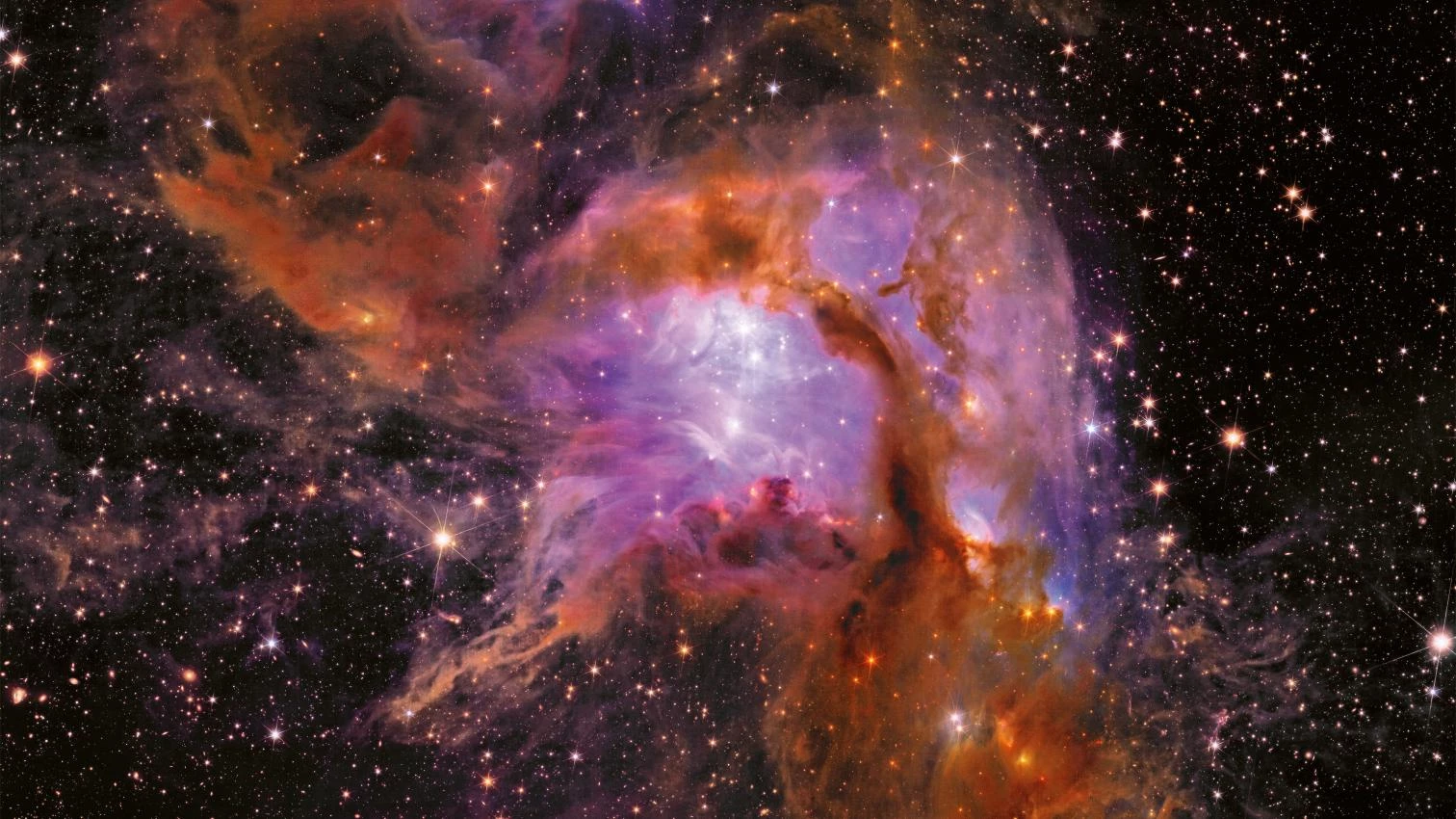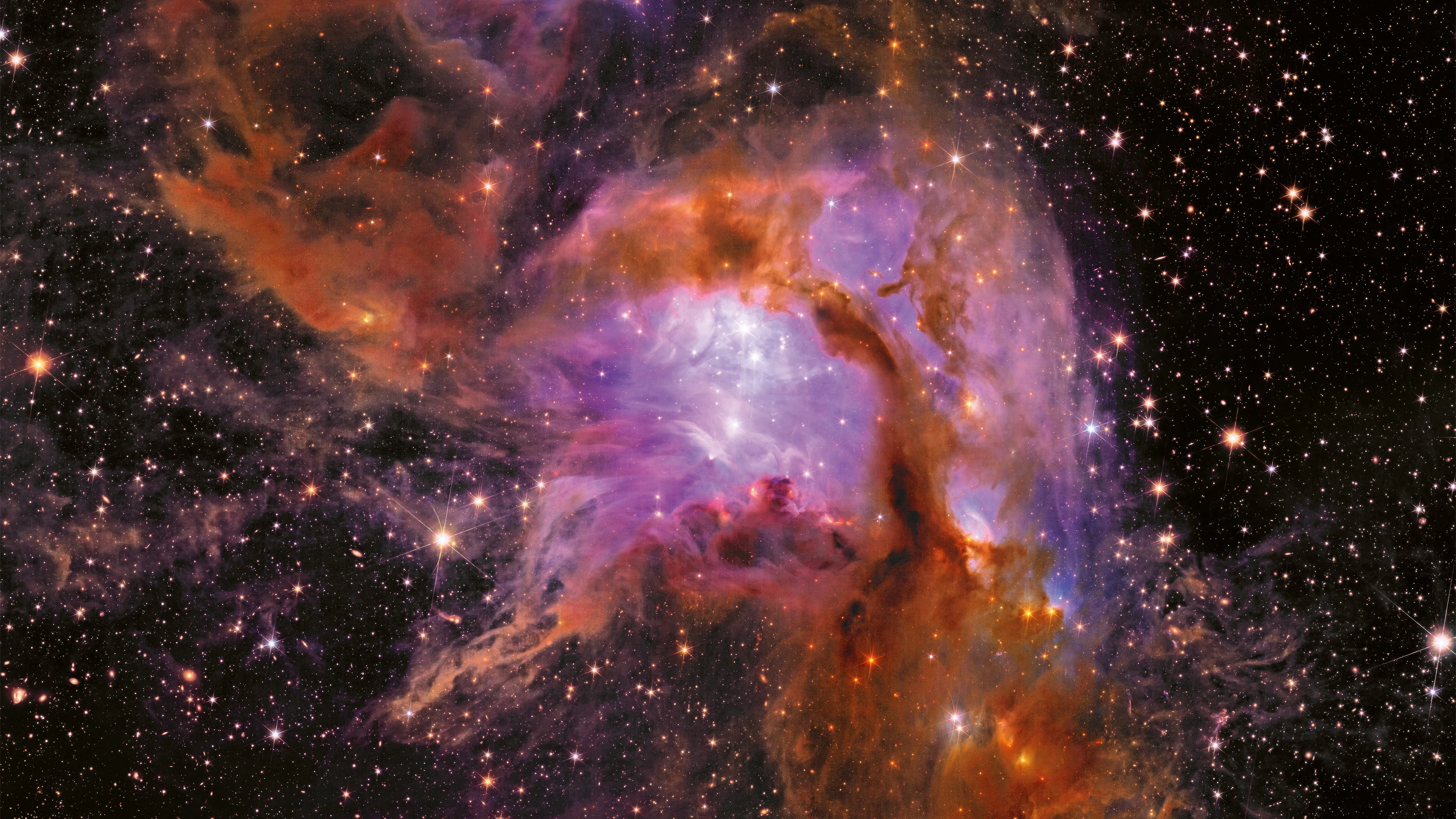
© ESA / Euclid
Allow me to introduce myself, not as I am known but as what, when all is said and done, I am, we are. I am the offspring of a star, a beneficiary of the Sun, a brother of the Moon, a neighbor of Venus and Mars, and above all an improbable offshoot of ancestral chemical reactions which, obeying the laws of affinity, came together to give rise to living beings. The first were single-cell, prokaryotic, with no nucleus. The next were eukaryotic, which clustered in groups to set off a process that, thanks to unpredictable mechanisms of evolution, produced biological entities like Homo sapiens. No one knows if these chemical reactions happened here, on our planet, or in some other, older place in our galaxy, the Milky Way. Supporting the first theory are the experiments carried out in 1953 by Stanley Lloyd Miller, who, to simulate the effect of ultraviolet radiation on the ‘primordial soup’ existing on primitive Earth, made a high-voltage electric discharge pass through a mix of ammonia, methane, hydrogen, and water, with the resulting appearance of different chemical products, including various amino acids, the components of proteins. The second theory, panspermia, is backed by the 2019 discovery of organic molecules in the asteroid Ryugu by the Japanese mission Hayabusa 2, which returned to Earth with this valuable material on 5 December 2020.
I am the child of a star, who knows which one, because my body contains chemical elements – off the top of my head, 99% of a human body is hydrogen, oxygen, carbon, nitrogen, calcium, and phosphorus – that were fabricated inside a star which for purely physical reasons decided to end its days, its billions of years of existence, in a supernova-like explosion, scattering its ancestral material throughout the universe. Yes, like us humans, stars are born, live a life, and work building elements and releasing energy, then die, sometimes leaving fossil traces that we call stars of neutrons. Our star, the Sun, will die too, or better, transform in about five billion years into a red giant, so huge that its radius will reach Earth’s orbit, burning our planet. It will have lived a very long time: ten billion years. So when we speak of ‘immortality,’ let’s do so only as a beautiful metaphor.
In truth, I am, or we are, not just children of stars. Between 50% and 70% of our body weight is water; that is, H2O, hydrogen and oxygen. And hydrogen – the most abundant chemical element in the universe, approximately 75% of visible matter – appeared very soon after that singular moment which challenges the imagination and we call the Big Bang. Consequently, our bodies also bear remains of that cataclysm to which we owe everything.
In mentioning the Big Bang, I cannot but bring up one of the limitations that the powerful human brain must accept. Faced with the mystery it represents, physicists hide behind the idea that in science, a starting point from which verifiable consequences are deduced suffices. And a primordial explosion meets the requirement. From it, physicists, chemists, astrophysicists, cosmologists, and astrobiologists have been deducing or sketching out – needless to say, not everything is solved – the existence of everything else: elementary particles, single stars or clusters thereof, the expansion of the universe, even the appearance of life. But our brains inevitably ask the obvious question: What came before? Why is it that the initial cataclysm happened at all? We do not have the answers to these questions, and I doubt we ever will.






